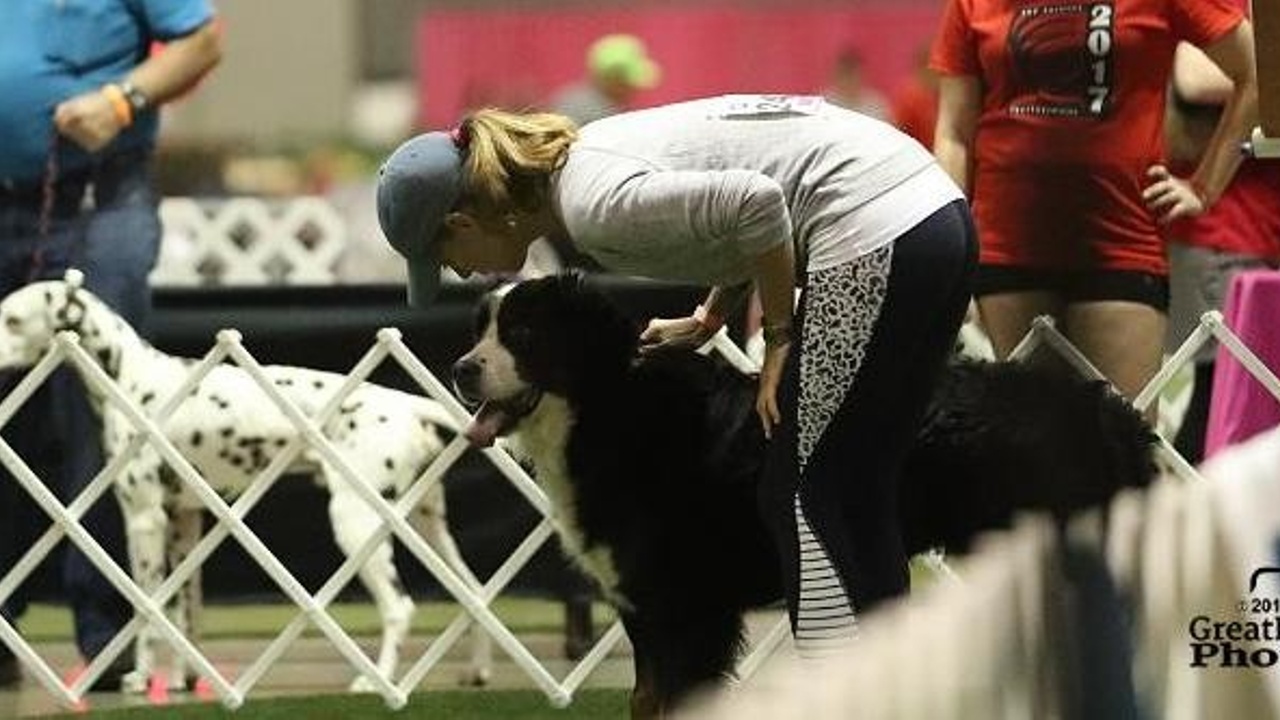While no one was watching.
Jan 18, 2018
Photo Great Dane Protos
This year was Indie’s year in agility. She was six, the magic age where people say it all starts to click. Of course, while I didn’t want to believe it would take this long, it’s true. We are now a seasoned team.
Indie received wonderful compliments whenever we would trial in a new area where no one had seen her run before. She was consistent and fun to watch as her confidence and joy were evident to strangers. She had also become genuinely good at jumping, something she decidedly was not in her younger days. Truth be told she used to “jump like a goat” and “land in a heap,” phrases borrowed from my hunter/jumper days. It took her until she was nearly five to be able to operate her body in a graceful manner and for me to give her enough advance info so she knew where she was headed and thus did not land in a heap.
But really the success was happening outside the ring where no one was really paying attention. From our warm-up routine to practitioners who keep her aligned to how we live together in the day-to-day. It was our relationship plus a bunch of hours spent training, conditioning, trialing and playing other sports that culminated in QQs. All these things are invisible to people watching us execute a blind cross, but imperative to our success.
Find the opportunities
A smart coach told me long ago that whatever is going wrong in the ring is also happening somewhere else – I just had to find it. Well, the converse is also true. Whatever is going right in the ring happens everywhere else, too.
And it’s also cumulative, something I am constantly reminding myself when working with my young dogs who don’t yet have the hours on the ends of leashes or in the ring. Patience, grasshopper.
I’ve had a few people tell me, “My dog would be great at agility, you should take her,” and I know they have no idea what it takes – behind the scenes – to really get a dog ready to walk into the ring. My first dog was three, and Indie was two before they were in the phase of “almost ready.” Not because of training, but because of living life and building relationships.
So two takeaways today:
The next time you are having a problem, try to find where else in your day-to-day life you can work on that issue. For instance, I recently realized that Moxie doesn’t fully make the choice to engage with me in distracting environments, so we are working on her making that choice in daily life. She has to ask for things, demonstrate respect, choose to work as a team.
On the flip side, find your strengths and build upon those. You can use those positives to either further your training with that dog or another one in the home. Moxie is a rockstar when it comes to offering behaviors, so how can I create more opportunities for her to offer – including offering engagement?
Wanna get these sent to your inbox?
Trade me your email addy and I'll send you the latest news and updates from our team. Don't worry, your information will not be shared.
We hate SPAM. I will never sell your information, for any reason.


